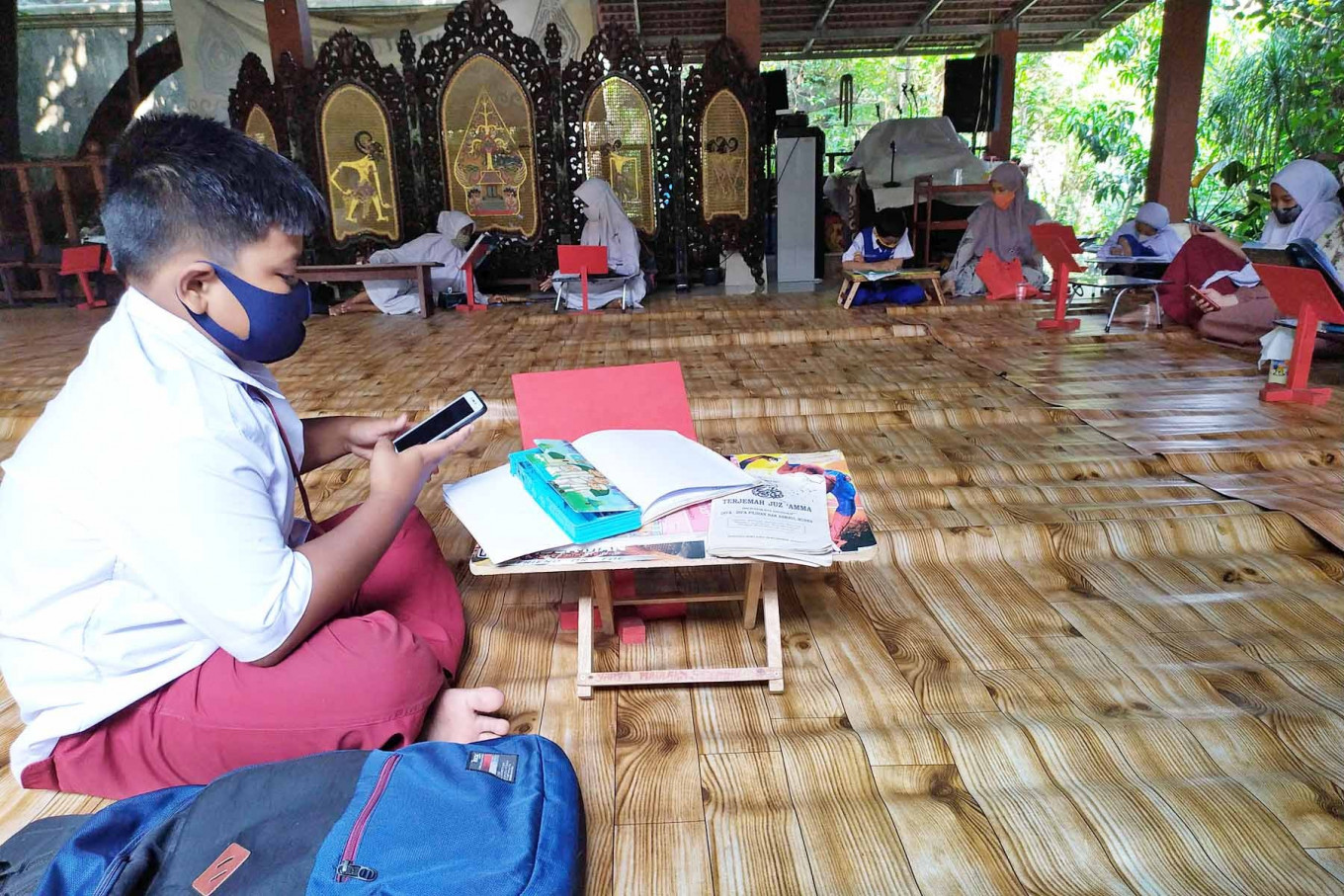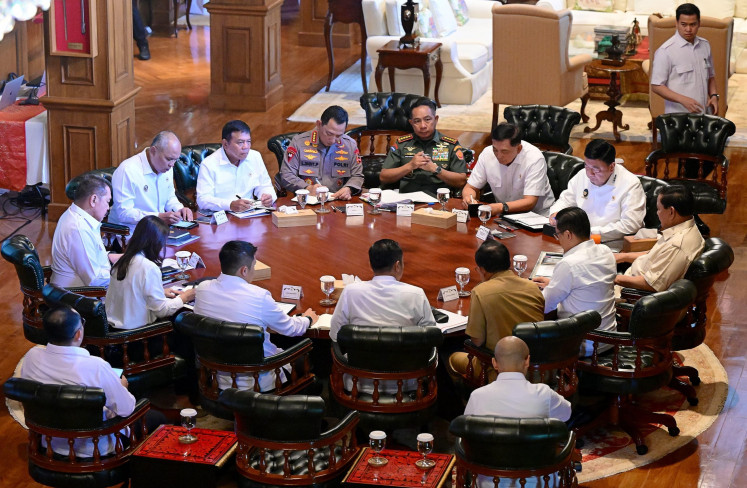Popular Reads
Top Results
Can't find what you're looking for?
View all search resultsPopular Reads
Top Results
Can't find what you're looking for?
View all search resultsState distance learning plan fails to account for poor, disconnected students
The government’s plan to fund schoolchildren’s access to the internet in support of online-based learning has spotlighted the social gaps that children living in poverty and in remote areas must face, experts have said.
Change text size
Gift Premium Articles
to Anyone
Gemma Holliani Cahya
The Jakarta Post/Jakarta
The government’s plan to fund schoolchildren’s access to the internet in support of online-based learning has spotlighted the social gaps that children living in poverty and in remote areas must face, experts have said.
Education and Culture Minister Nadiem Makarim announced on Thursday that the state would allocate Rp 7.2 trillion (US$ 532 million) in mobile phone credits and mobile data packages to support distance learning methods for the nation’s students and teachers, at a time when the pandemic has all but canceled face-to-face interactions across the country.
Read also: Teachers, parents fret over health risks as schools prepare to reopen
The state subsidy aims to cover the needs of the nation’s 60 million school students in the form of 35 gigabytes of internet data per student every month until the end of the year, while every teacher would get a monthly data allotment of 42 GB.
The ministry is verifying and updating its national student data until Sept. 11, which would give it a better idea of potential data package recipients.
Under the new scheme, which is financed by ministry funds reallocated from the delayed Mobilization Organization Program (POP), each university student and lecturer would also get 50 GB of mobile data per month.
While applauded by many, the creative solution still leaves some big holes in the implementation of distance education, as experts note that not every student in the country has a mobile phone or an internet connection.
Retno Listyarti, a commissioner for the Indonesian Child Protection Commission (KPAI), said that while her office expressed appreciation for the ministry’s decision, she insisted that the plan followed a class bias.
She said the program only provided learning aid only for those who could afford smartphones and access to a stable internet connection.
“Such assistance cannot be enjoyed by poor students and students who live in rural areas. This group of students can only access education with face-to-face learning methods, but there is no help from the government for them,” Retno said in a statement on Monday.
According to 2018/2019 statistics on the Indonesian education sector, a bit more than half of all Indonesian students are active internet users.
Read also: Embracing educational disruption under pandemic
Heru Purnomo, secretary-general of the Federation of Indonesian Teachers Associations (FSGI), also believes that the allocated funds are excessive.
“It is too big to only solve one problem, especially when internet data won’t be enjoyed by people from poor families who do not have smartphones to begin with,” he said on Monday.
Heru suggested other ways to implement distance learning, such as optimizing the role of public broadcaster TVRI for airing educational programs for schoolchildren and students. He believes TV programs are still able to reach more students in Indonesia, even those in households without any hi-tech gadgets.
The KPAI also reminded the government that internet connection was rarely the only thing that student’s faced. Retno appealed to the ministry to work with every school and map out each of their unique learning environments, rather than just handing out a lump sum for internet data packages.
“If we have a clear map of the problems and needs [of each school] then the Rp 7.2 trillion can also be allocated for [other needs],” she said.
Among those are buying smartphones for students and teachers who need them, installing internet signal boosters in areas with spotty coverage, helping teachers cover commuting costs in places where they can only teach in person, and supporting infrastructure for face-to-face learning.
In a recent survey of 3,347 schools across the nation, the KPAI found that most schools had been lacking adequate infrastructure to ensure proper sanitation for students and faculty members – considered more important for in-person learning than phone credits – even before the pandemic.
The data showed that 46 percent of schools have less than five sinks, while only 6 percent have more than 20 sinks on site. The survey also shows that 5 percent of schools do not provide soap and that another 28 percent only provide it some of the time.
Sanitation has become more important than ever as frequent and proper hand hygiene is one of the most important measures for curbing the spread of COVID-19, especially as schools mull over reopening their classrooms for face-to-face learning.
“All of that requires large sums of money. So the budget must go toward education, especially for preparing school infrastructure in line with health protocols,” Retno said.
“This is the only way to guarantee and fulfill the right of millions of Indonesian children and teachers to live, be healthy and have access to education.”
The COVID-19 pandemic has had a devastating impact on education, widening the gap between children from well-off families and their poverty-stricken peers.
This is further complicated by the government’s decision to shift the responsibility for reopening schools to local administrations – and effectively to the parents and teachers themselves.
Read also: Indonesia to allow phased reopening of schools in COVID-19 ‘green zones’: Minister
Data from the education ministry show that 4,966 schools in “green” and “yellow” zones have reopened their doors for face-to-face instruction. The government says that “green” zones are areas that recorded zero cases of COVID-19 and that “yellow” zones are areas that have a low risk of transmission.
Green and yellow zones cover some 43 percent of cities and regions in the entire archipelago.










